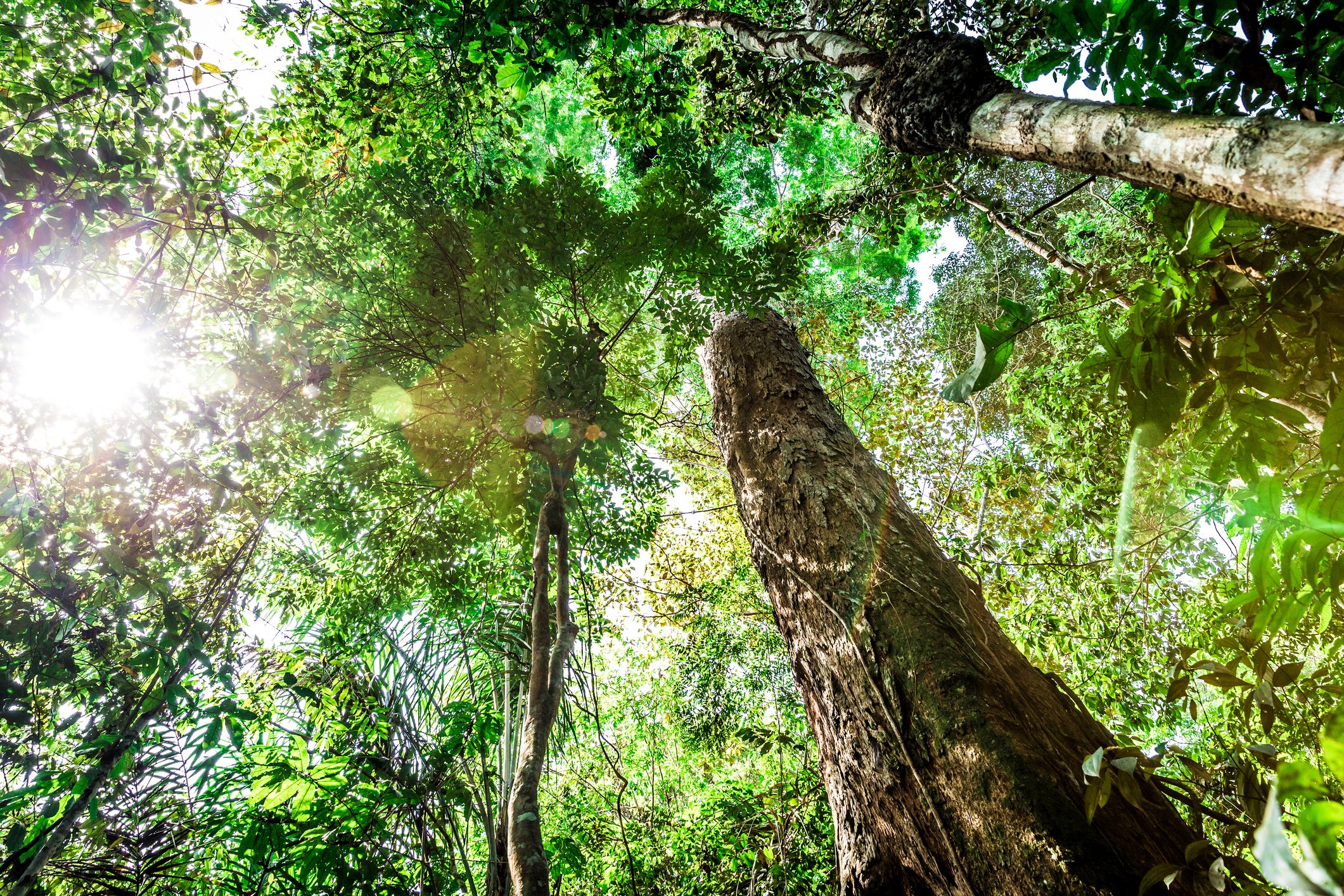Land ecosystems rapidly approaching ‘temperature tipping point’, study says
The point at which land switches from being a carbon sink to a net emitter could be ‘exceptionally close’ without urgent action, says scientist

The land’s ecosystems are fast approaching a “temperature tipping point”, beyond which they could switch from soaking up CO2 to releasing it to the atmosphere, a new study finds.
The research studies how plants and soils are likely to respond to rapidly increasing temperatures over the coming decades.
At present, the land provides a “climate service” by absorbing around 30 per cent of the emissions caused by humans each year.
Trees take in CO2 when they carry out photosynthesis – the process where plants absorb CO2 in order to build new materials, such as shoots, roots and leaves. This means that, as long as forests remain intact, they can act as long-term “sinks” of CO2.
However, rising temperatures threaten land’s ability to absorb CO2. One reason for this is that temperature plays a chief role in moderating photosynthesis.
The new research, published in the journal Science Advances, uses a major global dataset to study how the land is responding to temperature change.
Dr Katharyn Duffy, lead author and postdoctoral scientist at Northern Arizona University, told The Independent: “Unlike other tipping elements in the Earth system, the climate tipping point for the terrestrial biosphere could be exceptionally close – 20-30 years away – without action.”
Her research finds that, globally, plant photosynthesis is at its most optimal rate at temperatures of around 18C for “C3 plants” and 28C for “C4 plants”. (Around 85 per cent of plant species are C3 plants.)
Beyond these temperatures, rates of photosynthesis – and hence the ability of land to store carbon – start to decline.
By contrast, rates of plant respiration continue to increase as temperatures rise. Plant respiration, the process by which plants produce energy for growth, causes CO2 to be released into the atmosphere.
The point at which respiration rates start to exceed photosynthesis rates occurs around 25C, according to the results. This “constitutes a powerful tipping point for the land sink of carbon”, the authors say, beyond which the ability of plants to absorb CO2 could start to rapidly decline.
At present, less than 10 per cent of land ecosystems experience temperatures that are past the optimum for photosynthesis.
However, if future greenhouse gas emissions are very high, up to half of land ecosystems could regularly experience intolerable temperatures by the end of century, according to the results.
“The 'buffer' or 'discount' against carbon emissions that we currently receive from the biosphere is more fragile than we previously realised,” said Dr Duffy.
In addition, some of the first ecosystems to see intolerable temperatures will be those that currently hold the most carbon, according to the results. This includes the Amazon and other rainforests in southeast Asia.
As a result of this, the ability of the land to store carbon could be nearly halved by the middle of the century, the study says.
The research makes an “important contribution” to helping scientists understand how the land will respond to temperature rise, says Dr Martin Sullivan, an ecologist at Manchester Metropolitan University, who was not involved in the study.
“The temperature sensitivity of the land carbon sink is a major uncertainty in climate models,” he told The Independent.
Climate models are tools used by scientists to simulate how the world is likely to respond to greenhouse gas emissions.
However, it is worth noting that the global dataset used in the study uses “very few samples from tropical regions”, Dr Sullivan added. This means that it is still not fully understood how tropical forests are responding to rising temperatures, he said.
Join our commenting forum
Join thought-provoking conversations, follow other Independent readers and see their replies
Comments
Bookmark popover
Removed from bookmarks